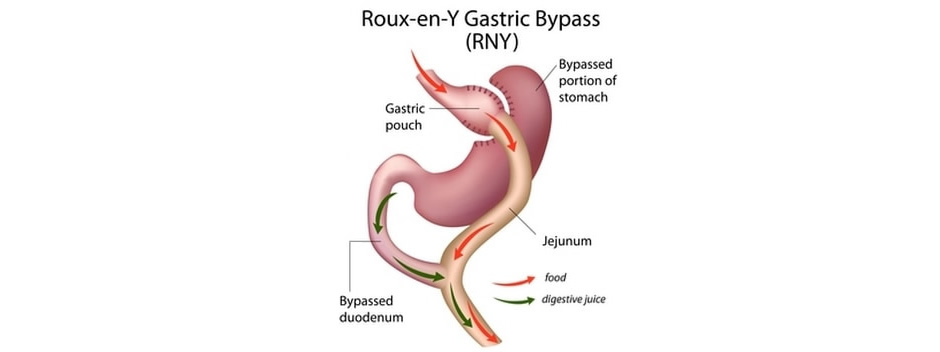Gastric Bypass
Gastric Bypass discussion
Gastric Bypass has been around for almost 50 years in various forms. The fact that it has endured for so long and is still one of the most commonly performed operations for obesity worldwide is proof of its effectiveness. The development of gastric bypass is credited to Dr Edward Mason in 1966 but the procedure has undergone several modifications from its initial form. It was performed laparoscopically first in 1994.
The essential goal in bypass surgery is to create a small stomach out of the normal stomach for food to go into. This "pouch" of stomach is separated completely from the rest of the stomach, unlike the classic "stomach stapling" operation where there is just a partition in the stomach rather than complete separation. After the small pouch is made, gastrointestinal continuity is maintained by connecting the small bowel to the pouch. Food and fluid consumed therefore bypasses the main stomach and duodenum which remain in place.

Benefits of the bypass include the following:
- The reliability of weight loss is excellent
- The magnitude of weight loss is usually better than gastric banding
- The rate of weight loss is usually rapid
- The operation is anti-reflux in nature and should resolve most cases of gastro-oesophageal reflux
- The operation has been around for decades therefore we have plenty of information about its long term safety and efficacy
- There is usually substantial hunger suppression after bypass surgery
- It is extremely powerful against diabetes and has hormonal effects independent of weight loss improving the body's ability to fight diabetes
- It can be done with a laparoscopic (keyhole) approach almost all the time
- There is usually less food intolerance compared to gastric band patients
- There is no permanent removal of a normal organ such as with sleeve gastrectomy surgery
- Unlike "malabsorptive operations" (e.g. biliopancreatic diversion), diarrhoea or malnutrition is rare
- Mild dumping syndrome may help with certain food habits such as chocolate addiction
- The operation is reversible if need be
The down-sides of gastric bypass are…
- It is more complex than banding and sleeve surgery and takes longer to do
- The operation carries more risk than banding or sleeve surgery
- You need to be vigilant with vitamin supplements post-operatively as some patients are prone to vitamin or mineral deficiencies
- Occasional issues can occur down the track such as ulcers at the join at the top or small bowel twisting
- Reversing the procedure, although rarely required, is more technically challenging than reversing a band
- Leaks can occur up to 2% of cases. These can be difficult to treat and require many weeks or months in hospital
- Dumping syndrome can occur and be uncomfortable
Video of Gastric Bypass Surgery
Robotic Surgery Videos
Robotic Gastric Bypass Surgery
Mr Clough is one of the most experienced surgeons in Australia using robotic technology to aid in getting the best outcomes after gastric bypass surgery. More information about the Da Vinci robot can be found here.
All you need to know about Gastric Bypass – short version (left), comprehensive (right)